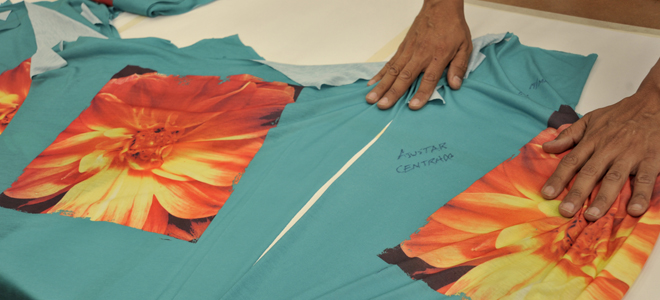 Color Check vs Sample
Color Check vs Sample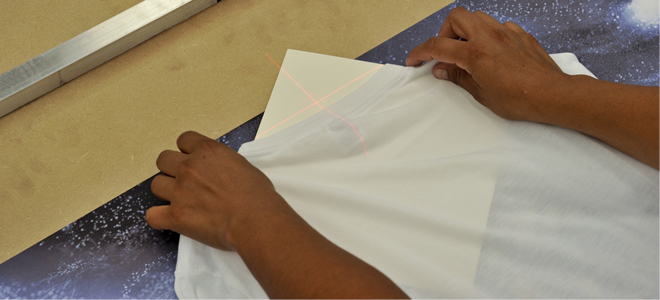 Precision Placement System
Precision Placement System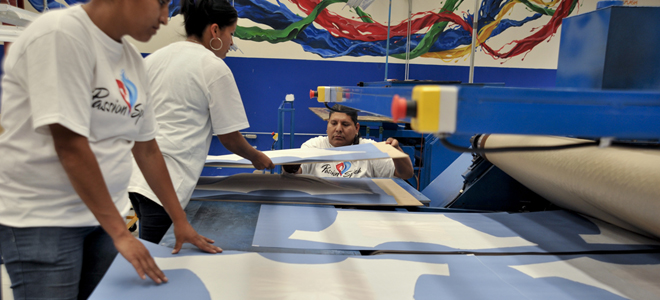 Garments Into Sublimation Press
Garments Into Sublimation Press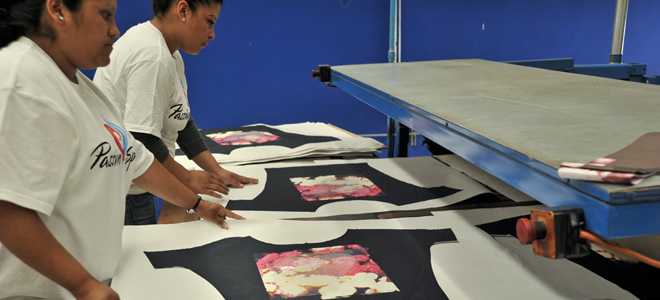 Garment Into Sublimation Press
Garment Into Sublimation Press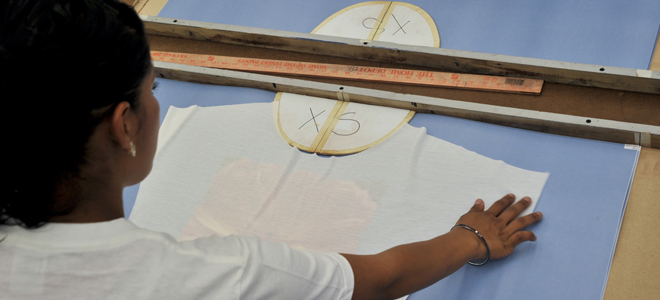 Placement Template For Sublimation
Placement Template For Sublimation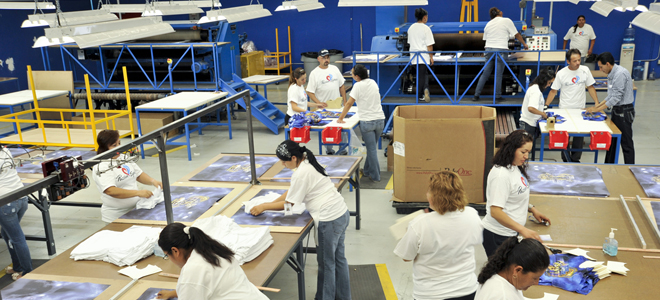 Sublimation Department
Sublimation Department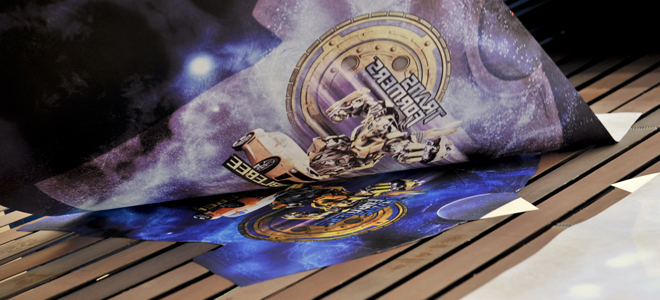 Removal Of Sub Sheet From Printed Garment
Removal Of Sub Sheet From Printed Garment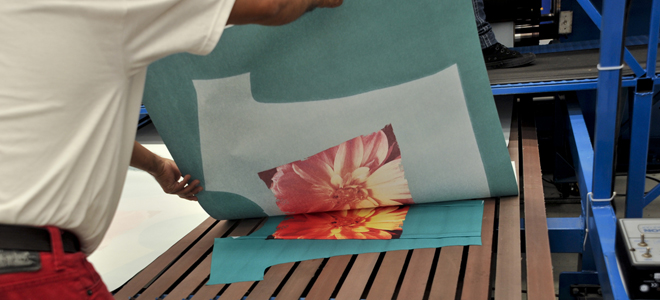 Sublimated Garment From Press
Sublimated Garment From Press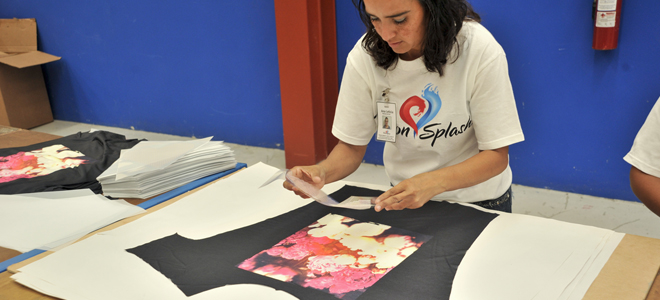 Applying Embellishment To Sublimated Garment
Applying Embellishment To Sublimated Garment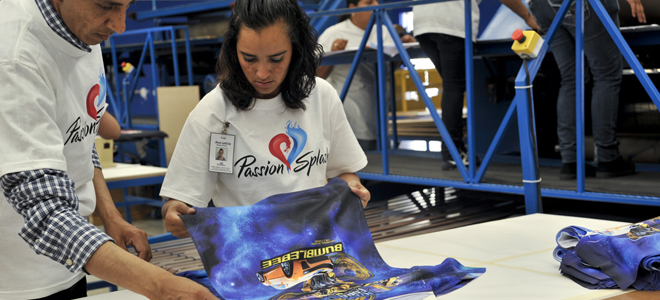 QC Inspection Of Sublimated Garment
QC Inspection Of Sublimated Garment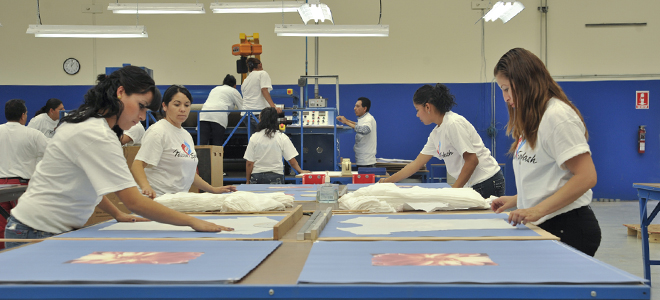 Cut Piece Placement On Sublimation Sheet
Cut Piece Placement On Sublimation SheetSublimation
Dye-sublimation is a printing process that uses heat to transfer dye onto medium materials such as fabric. The sublimation name is applied because the dye transitions between the solid and gas states without going through a liquid stage. Dye sublimation heat transfer imprinting printers, use special inks to create transfers designed to be imprinted on polyester items.
Most dye-sublimation printers use CMYO (Cyan Magenta Yellow Overcoating) colors, which differs from the more recognized CMYK colors in that the black dye is eliminated in favor of a clear overcoating. This overcoating (which has numerous names depending on the manufacturer) is also stored on the ribbon and is effectively a thin laminate which protects the print from discoloration from UV light and the air, while also rendering the print water-resistant.
The reason that sublimation cannot be done using 100% cotton is because the gases can only transfer from the paper to the synthetic fibers (typically polyester) but the gases cannot transfer or adhere to natural fibers such as cotton.
The dye-sublimation printing process is used to print on polyester or other synthetic fabrics. It is used for applications such as T-shirts, banners, table covers, id cards, sportswear and flags. The original printers were an electrostatic technology using toners but now are generally large format inkjet printers using specially formulated inks. The dye sublimation inks are a pigment suspended in a liquid solvent, like water. The images are initially printed on coated heat-resistant transfer paper as a reverse image of the final design, which is then transferred onto polyester fabric in a heat press operating at a temperature around 180 to 210 C (375 F). Under high temperature and pressure, the dye turns into a gas and permeates the fabric and then solidifies into its fibers. The fabric is permanently dyed so it can be washed without damaging the quality of the image.
Advantages of dye-sublimation over other methods of textile printing:- Images are permanent and do not peel or fade.
- Dye does not build up on the fabric.
- Colors can be are extraordinarily brilliant due to the bonding of the dye to the transparent fibers of the synthetic fabric.
- Truly continuous tones can be achieved that are equivalent to photographs, without the use special techniques such as half-screen printing.
- The image can be printed all over the entire item, with no difficulty in printing all the way to the edges.
- The printer speed is slow.
- Any creases in the apparel during printing leave blank spots behind.


